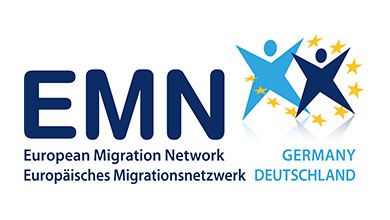Satisfying Labour Demand through Migration in Germany ,
 Source: BAMF
Source: BAMF
Controling economic migration to Germany
The organisation of immigration has, for some years now, been acknowledged as being one of the most important social challenges facing Germany. A new study of the Federal Office for Migration and Refugees addresses the question of how labour demands are covered through immigration. The study carries out an inventory of the current situation and names the criteria and the legal bases upon which economic migration to Germany takes place.
In addition, comprehensive data on gainful employment of foreigners, industry specific employment demands as well as current trends of the inflow and outflow of foreign manpower are presented.
Differing Employment needs according to industry sectors
The number of gainfully employed persons in Germany who originate from third countries rose from 1,901,000 persons in 2004 to 1,937,000 in 2009. There has been a noticeable decline in the number of publicly recorded vacancies. In 2009, 485,528 vacancies on average were registered with the Federal Employment Agency. This represents a decline of almost 15 percent compared to 2008.
However, in certain economic sectors, the number of vacancies rose, indicating that there is an increased demand for labour. Engineers and persons for the social occupations were sought after more in 2008 in comparison to the previous year. Increases were also recorded in public health and in other mainly personal services. The Federal Government is pursuing the goal of meeting the demand for skilled workers in Germany primarily by increasing training and advanced training of domestic skilled workers, by increasing the labour-force participation rate of women and older persons and by upgrading the skills of persons with a migration background who are already living in Germany.
Slightly decreasing trend in economic migration
Skilled migrants make up the majority of gainfully employed persons in Germany who originate from third countries, accounting for a good 54 percent of the total. Highly qualified migrants account for more than 23 percent and low-skilled migrants for 20 percent. The most important groups among third-country nationals entering the Federal Republic of Germany for employment purposes are nationals of the USA, India and China. Overall economic migration from abroad declined slightly between 2008 and 2009, however the emigration of the foreign labour force increased.
Along with measures aimed at enhancing Germany’s attractiveness, including the area of recognition of international qualifications and identification of labour shortages, long term aspects that would result in demographic trends should also be kept in sight.
Working Paper 32 was developed as the German contribution to a comparable study of the European Migration Network (EMN) and was written by the German EMN Contact Point in the Federal Office for Migration and Refugees.
Bernd Parusel and Jan Schneider

